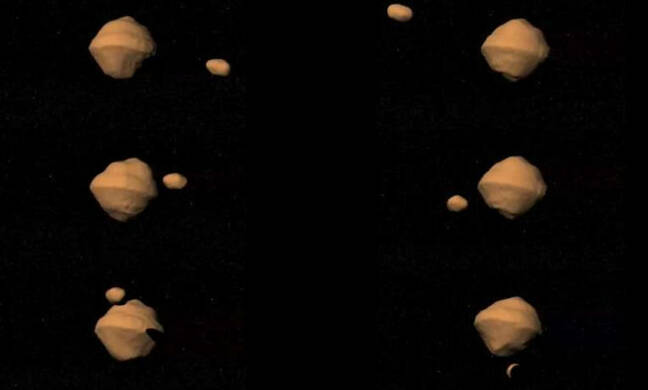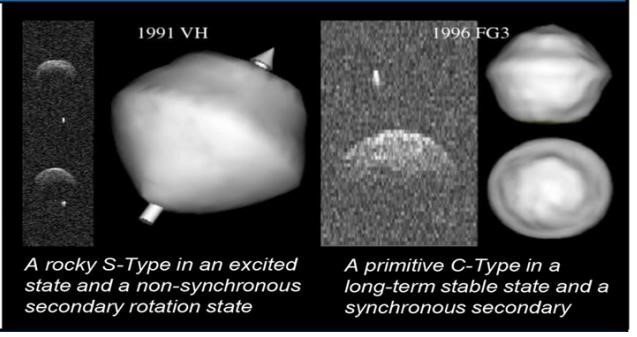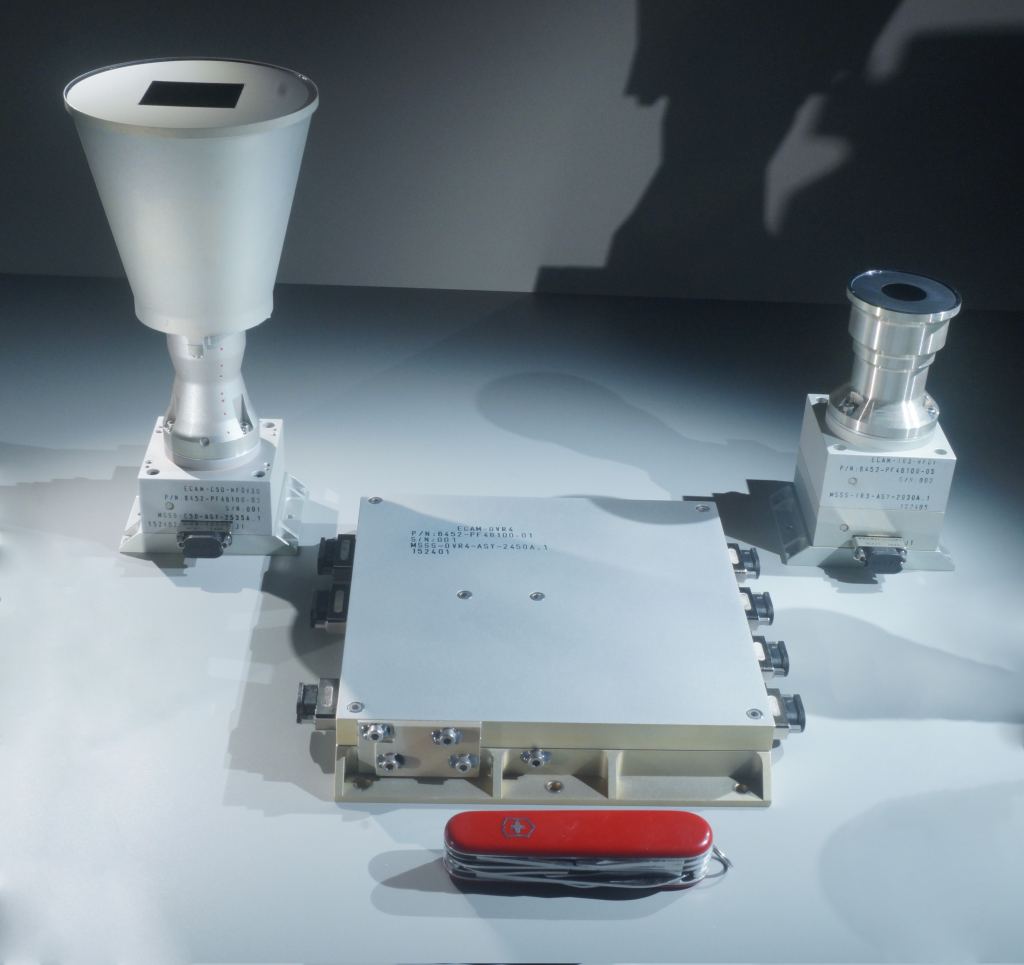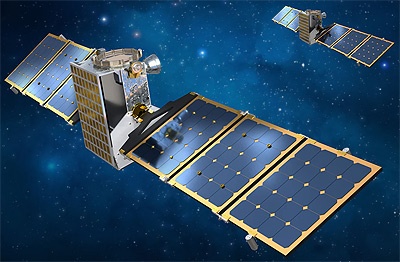Gravity is good for a lot of things. It brings objects closer together. Occasionally they crash into each other. But sometimes two objects get locked in a unique gravitational dance that pairs them together. That dance can be short-lived, or it can last for billions of years. In some cases the objects are large (i.e. planets and moons), but they can also be quite small.
These small dancing objects are called binary asteroids, and we know very little about them, despite making up approximately 15% of all asteroids in the solar system. That is until a newly greenlighted NASA mission, called Janus, will arrive at two different binary asteroids around 2026.

Credit: NASA/JPL
One unique thing about Janus, and part of the reason for the name, is that it will actually consist of two spacecraft that will be targeted at the same two binary asteroid pairs. The intention is to fly by them while collecting data in infrared and visible light. It will be the world’s first fly-by and close-up observation system of a binary asteroid pair.
The hope is that this first fly-by will provide a more detailed understanding of some of the dynamics and forces in the dual-body system. So far the only observational data collected on binary asteroid pairs has been remote sensing from satellites on or near Earth. However, the two systems that Janus will be visiting are two of the most studied in the solar system.

Credit: D.J. Scheeres et all.
The first, known as 1991 VH, is the more chaotic of the two. It consists of a much larger asteroid that is essentially orbited by its own much smaller moon that follows an extremely erratic and unstable orbit. The second, known as 1996 FG3, is much more stable. Again there is a large asteroid orbited by a much smaller companion, but the orbit is much more synchronous and long-term. 1996 FG3 has been the target of a few other canceled or suspended missions by ESA and CNSA, but no one has yet visited it.
The two binary asteroid systems will be thoroughly imaged by the instrumentation on Janus’ two probes. That instrumentation will focus mainly on visible and infrared light cameras. The ECAM-M50 (visible) and ECAM-IR3a (IR) are both developed by Malin Space Science Systems, and have been used on previous similar missions, such as OSIRIS-REx’s visit to the asteroid Bennu.

Credit: Malin Space Science Systems
Part of the reason for reusing existing technology is that Janus is one of the first three missions selected for NASA’s SIMPLEx program, whose new opportunity round was unfortunately just delayed. This program is focused on using smaller, more cost effective exploration satellites. It has an upper limit of $55 million in funding, though some doubt the missions selected for the program can hit that mark. There is also a weight limit of 180 kilograms, though that still puts these missions far above the size of most cubesat configurations.
That will put plenty of constraints on the spacecraft’s development team, based at the University of Colorado Boulder and Lockheed Martin. The two teams, headed by Daniel Scheeres at CU Boulder and Josh Wood at Lockheed Martin, worked together on the OSIRIS-REx team. They’ll need to leverage those standing relationships, and the technology they used, if they want the mission to be ready for take off at it’s scheduled launch time of 2022. Otherwise the dance of gravity and orbital mechanics might make it much more difficult to reach the mission’s interesting targets.
Learn More:
USRA: Janus: A Mission Concept to Explore Two NEO Binary Asteroids
UC Boulder: Where No Spacecraft Has Gone Before: A Close Encounter With Binary Asteroids
NASA: New SIMPLEx Mission to Send SmallSats on Longest Deep Space Journey to Date
SpaceRef: MSSS To Provide Science Cameras For Janus Asteroid Mission
The Register: NASA is sending two small hand-luggage suitcase-sized spacecraft into the void to study binary asteroids

